

Exploring whether to buy carbon removals as a business?
Whether it’s to address residual emissions and fulfil a net zero target, or to demonstrate real climate leadership by funding the vital scale up of carbon removal technologies, many businesses are looking into buying carbon removal today.
In this article we’ll help you get started on your carbon removal journey, covering:
- Different methods for removing carbon from the atmosphere – nature-based and engineered carbon removal
- Key considerations for businesses when choosing which projects to buy carbon removal from
- The process for buying carbon removal.
Subscribe for the latest insights into driving climate positivity
What carbon removal solutions are there?
It’s an exciting time in the world of carbon removal. Traditional nature-based carbon removals are rapidly being joined by innovative new technologies – giving us a variety of methods to pull carbon emissions back out of the atmosphere.
Let’s take a look at some of the common carbon removal project types you’ll come across, and the pros and cons of each for carbon buyers.
We’ll break them down into the following 3 groups:
- Nature-based carbon removal
- Engineered or technological carbon removal
- The in between – carbon removal solutions which amplify nature’s processes.
Nature-based carbon removal
What is nature-based carbon removal?
Well, oceans, soils, and plants all absorb and store carbon dioxide through processes such as photosynthesis (wherein plants convert carbon dioxide into sugars).
This all happens naturally as part of the earth’s carbon cycle.
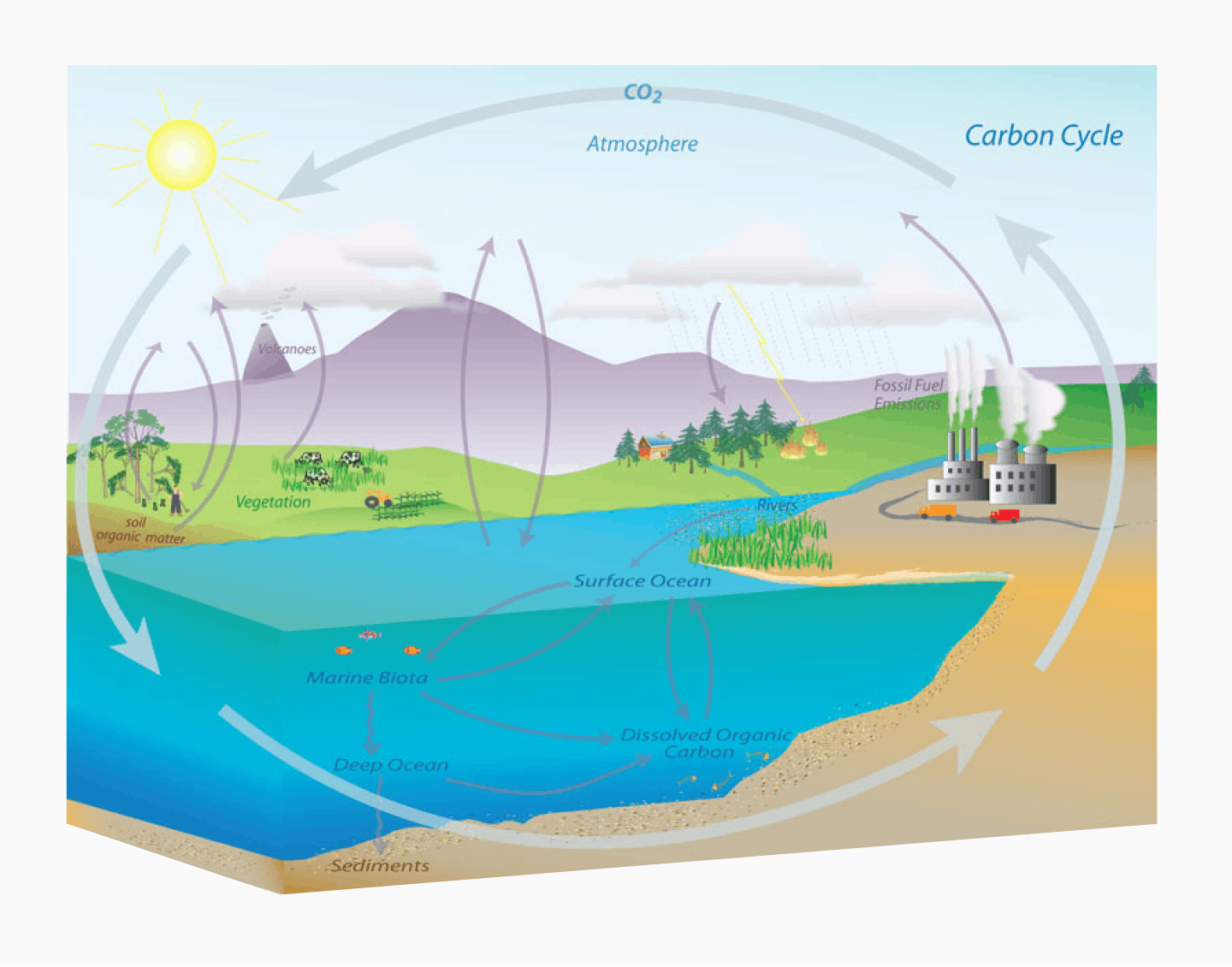 Credit: https://www.noaa.gov/education/resource-collections/climate/carbon-cycle
Credit: https://www.noaa.gov/education/resource-collections/climate/carbon-cycleBut, nature is constantly facing threats which reduce the amount of carbon absorbed and stored.
Carbon-rich forests are being cut down to sell as timber or to make room for industrial plantations and infrastructure. Increasing temperatures are warming ocean water and reducing its ability to absorb and store carbon dioxide. Intensive farming processes are leading to widespread soil degradation. And so on.
So, a crucial way to increase carbon removal is to restore these ecosystems and create new ones (as well as protecting existing ones, but that’s an emissions avoidance activity rather than carbon removal).
Nature-based carbon removal project types include:
- Reforestation: growing new forests on land which was previously a forest but is no longer e.g. a site which has been deforested for the timber industry is re-planted.
- Afforestation: growing new forests on land which has not previously been forest e.g. agricultural land or wasteland.
- Blue carbon: the restoration or growth of new ocean and coastal ecosystems which absorb and store carbon (often much more than trees) including mangroves, salt marshes, and sea grasses.
- Soil carbon: improving land management practices to increase soil health and increase soil carbon removal e.g. reducing tillage intensity, planting cover crops, animal grazing management.
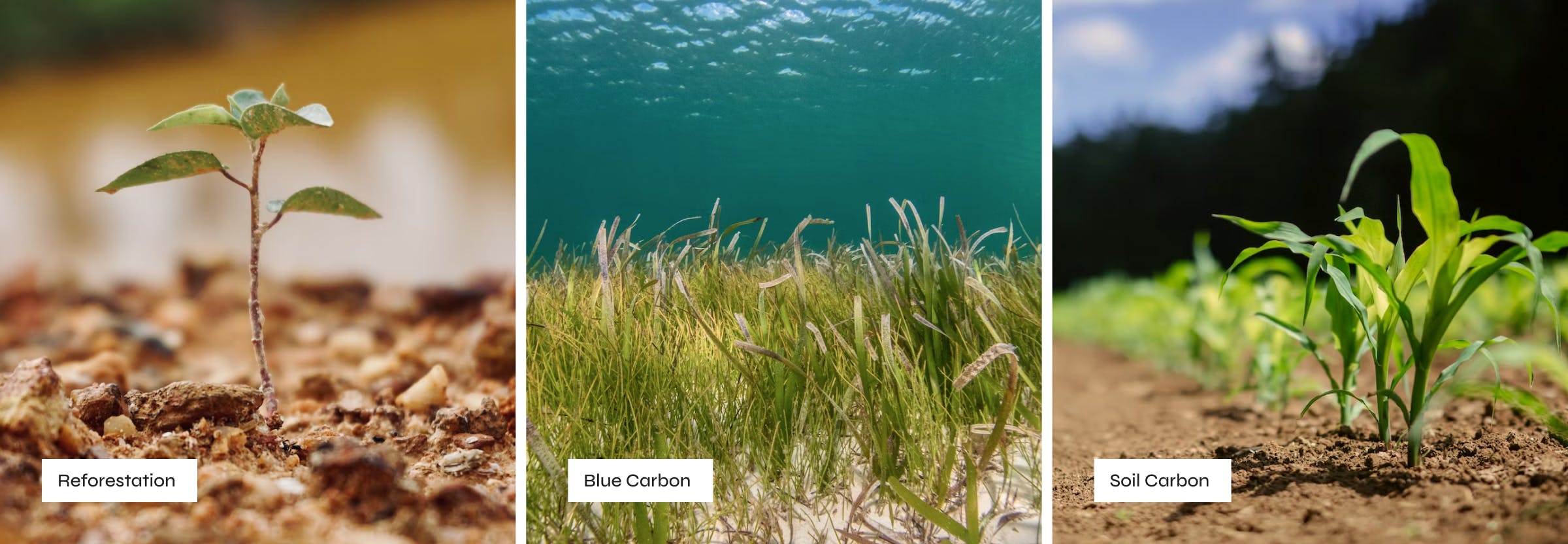
The pros of buying carbon removal from nature-based carbon removal projects include:
- Well-established methodologies: these project types have existed for a long time and we know that (when implemented effectively) they will work well to increase carbon removal. So, immediate impact can be made through buying from these projects, especially if they are selling ex-post carbon credits.
- Affordable carbon credits: there are less set up costs because the methods are well-established, and there is minimal need for expensive technology, so the carbon that these project types sell will be affordable.
- Strong co-benefits: if nature-based projects are well-designed and implemented in collaboration with local communities, they have potential to provide strong co-benefits by supporting the sustainable development of indigenous communities who often rely on nature, as well as providing vital wildlife conservation support.
And the cons:
- Risk of inaccurate measurements: it’s difficult to accurately estimate the amount of carbon removal that a specific forest will absorb and store over its lifetime (especially because that lifetime is also uncertain). New technologies are improving this, but there will always be question marks about the accuracy of measurements and, therefore, the additionality of the carbon bought.
- Risk of reversal and non-permanence: nature-based projects provide short-term carbon removal, because the carbon absorbed will eventually be re-released into the atmosphere through the carbon cycle. There’s also risk of early reversal due to external factors such as wildfires, extreme weather, disease, erosion etc – this is much reduced by effective project management in high-quality projects, but there will always be some inevitable risk.
Engineered carbon removal
What is engineered carbon removal?
Well, new and innovative technologies are being developed which have the potential to reliably remove vast amounts of carbon dioxide from the atmosphere and prevent them from ever being re-released – effectively pulling emissions that we’ve already emitted back out of the atmosphere.
Currently the main purely engineered carbon removal solution is Direct Air Capture.
At Direct Air Capture (DAC) plants carbon dioxide is captured straight from the air around us, using chemical reactions which bind with the carbon dioxide in the air and make it possible to separate it.
 Credit: 1PointFive
Credit: 1PointFiveTo make the carbon removal permanent, it then needs to be stored for good – known as Direct Air Capture and Storage.
This is done through geological storage, wherein the carbon dioxide is injected deep underground where it mineralises into a solid form and will remain for millennia – effectively putting fossil fuels back where we found them.
Read more about how it works in our deep dive on Direct Air Capture.
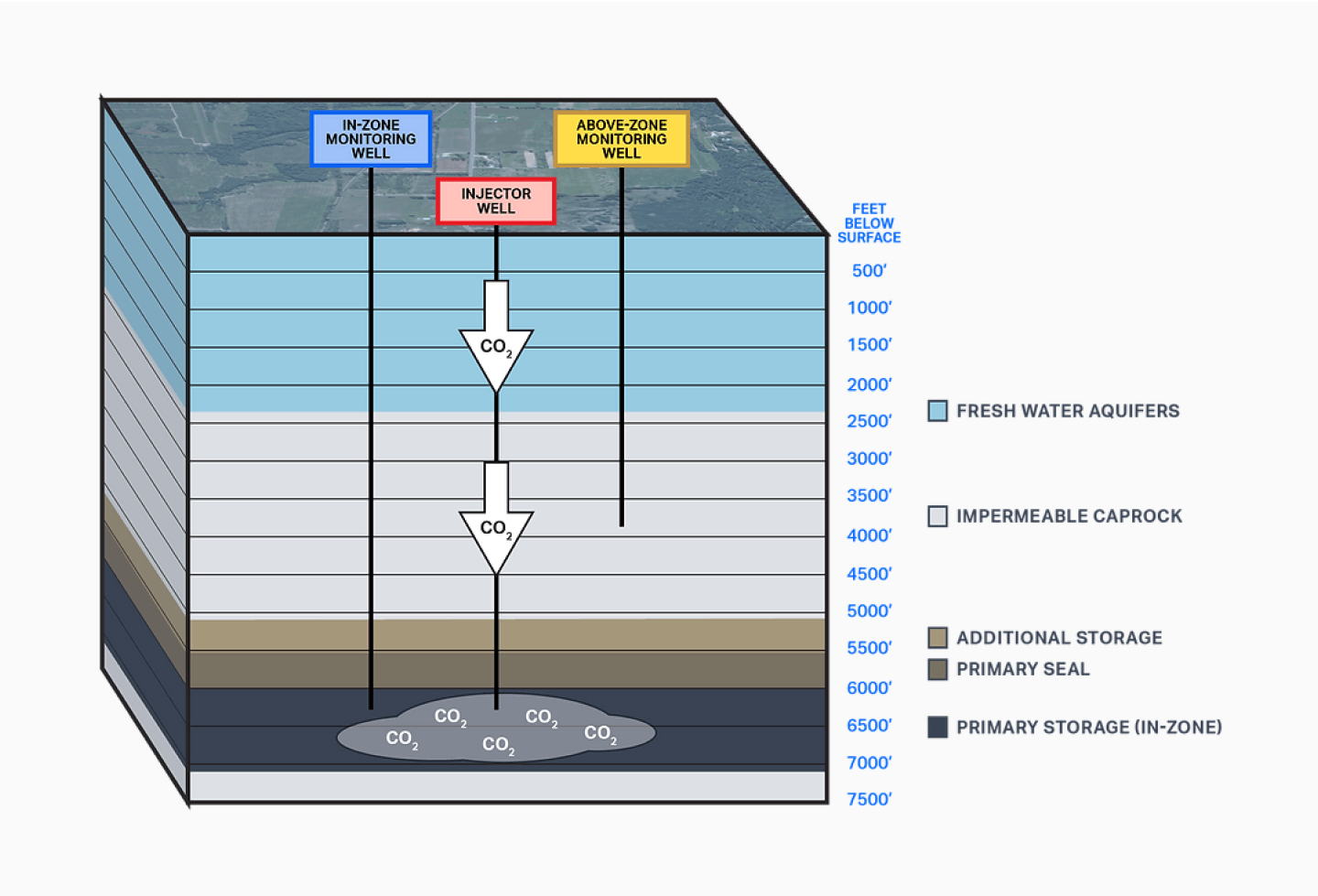 Credit: 1PointFive
Credit: 1PointFiveThe pros of buying carbon removal from engineered carbon removal projects includes:
- Permanent carbon removal: unlike in nature-based projects, it is possible to permanently store the carbon removed in engineered methods, which is ultimately what we will need to do with residual carbon emissions – both at a global level, and for companies with net zero targets of their own.
- More accurate measurements: it’s typically much easier to determine a robust baseline for engineered solutions because there is less variance in measurements (compared to e.g. a forest where the rate of carbon absorption and storage can vary).
- Huge potential for carbon removal at scale: technology like Direct Air Capture could provide us with the large-scale of carbon removal which we need to meet net zero targets if it is able to develop and scale quickly – and committing to buying carbon removals from projects of this type today means you are directly contributing to that future potential.
And the cons:
- The impact will be in the future – and there’s a risk that it never occurs: these methods are in the early stages of development and the technology is not yet widely available. This means that if you buy carbon removals from a Direct Air Capture project today, the actual impact will be delivered at a later date once the DAC plant is up and running and removing carbon – and if the plant is never successful, there’s a risk that your carbon removals will never actually be delivered.
- High costs: because these technologies are in the early-stages, they have very high costs for research, development, set up, materials etc which means the carbon credits they sell are expensive compared to well-established nature-based projects.
- Very high energy use: one of the major barriers to Direct Air Capture today is that the plants require a huge amount of energy to run which, of course, only creates more carbon emissions. Further development is required to reduce the energy use, and we also need to see the scale up of renewable energy generation for energy intensive technologies like this to become an effective solution.
The in between – carbon removal solutions which amplify nature’s processes
Other innovative carbon removal methods exist or are being developed which are somewhere in between nature and engineering – methods that amplify natural carbon removal processes to increase carbon removal.
Examples include:
- Biochar: organic plant matter (biomass) is heated at high temperatures in a low oxygen environment (a process called pyrolysis) to produce a solid, charcoal like form called biochar – creating a permanent store for the carbon dioxide absorbed by plants. When spread on agricultural land, biochar acts as a natural fertiliser.
- Bio-oil: the same process of pyrolysis can produce a liquid bio-oil when using much higher temperatures and a much shorter heating time (known as fast pyrolysis), again creating a permanent store for the carbon dioxide absorbed by plants. The oil can then be injected deep underground for permanent geological storage.
- Enhanced rock weathering: chemical rock weathering is a natural part of the carbon cycle which results in carbon dioxide from the atmosphere being removed and ‘mineralised’ into a solid form. In ‘enhanced weathering’ projects this process is sped up by spreading finely crushed rock for an increased surface area. Learn more in our deep dive on enhanced rock weathering.
- Ocean carbon removal: several methods are being explored to increase the ocean’s natural carbon removal processes, an example being Running Tide’s technique of seeding buoys with fast-growing kelp which removes carbon as it grows and then sinks deep into the ocean where it remains for thousands of years. Learn more in our deep dive on ocean carbon removal.
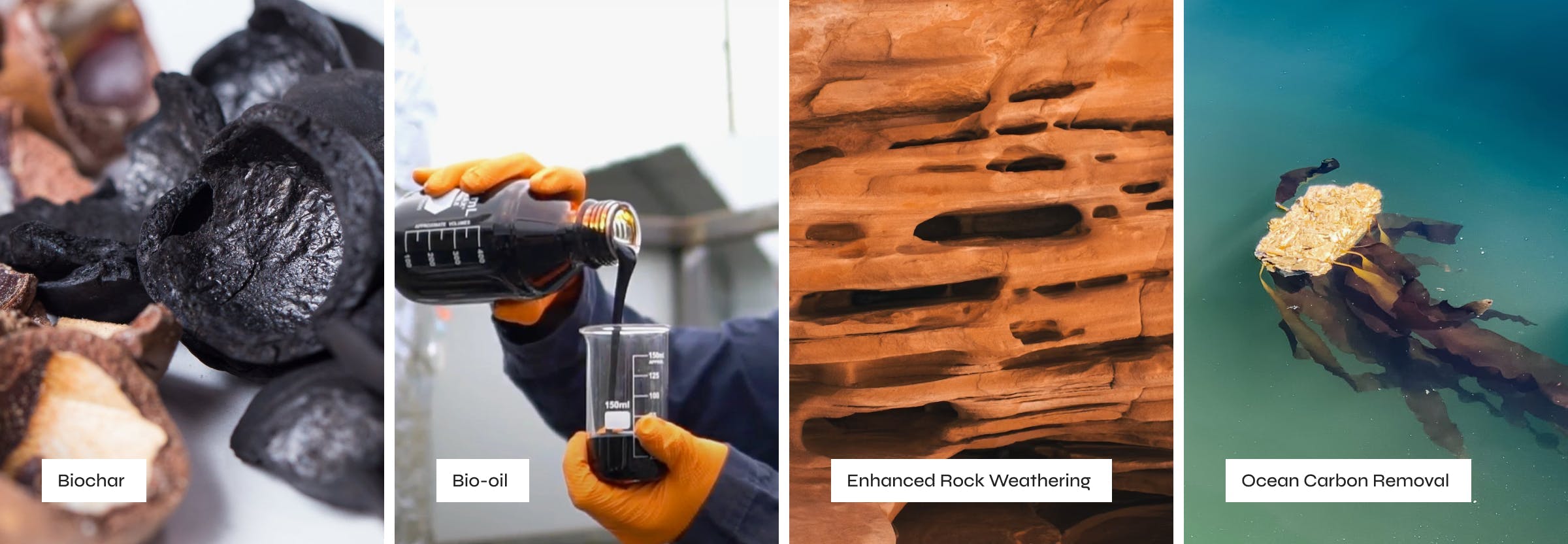
The pros and cons of these project types vary slightly, but are largely in line with those for engineered carbon removals: they offer the potential for much-needed large-scale, measured, permanent carbon removal, but today they are early-stage and so their carbon credits are expensive and carry the risk that the method may ultimately be unsuccessful.
Which of these projects should a business buy carbon removal from?
The decision of which projects to buy carbon removal from is one that ultimately only your company can make.
We need both nature-based and engineered carbon removal solutions to meet the scale of carbon removal that is needed to limit warming and meet global net zero targets – so all of these projects need funding.
The big differences as it stands are: the cost of carbon credits, the durability of the carbon removal – i.e. whether the method offers short-term or long-term storage, and the risk of the carbon removal not being delivered. So, your company will need to weigh up your budget availability and how comfortable you are with risk and non-permanence – bearing in mind that you must opt for permanent carbon removal if your aim is to fulfil a net zero target.
Our recommendation is to create a portfolio of different carbon projects to buy carbon removals from to balance out the costs, risks, and delivery timelines associated with different types of projects – as well as enabling you to choose the geographic spread of your purchases.
For instance, you could create a carbon removal portfolio which looks like this:
- 40% reforestation
- 30% mangrove restoration
- 20% enhanced weathering
- 10% direct air capture
Then, over time, as innovative carbon removal solutions successfully scale up, deliver removals, and become more affordable, you can increase the proportion of these types within the portfolio – in line with the best practice approach of the Oxford Offsetting Principles.
Of course, it goes without saying that within that portfolio you need to do your due diligence to ensure that the individual projects you buy carbon removal from are all high-quality.
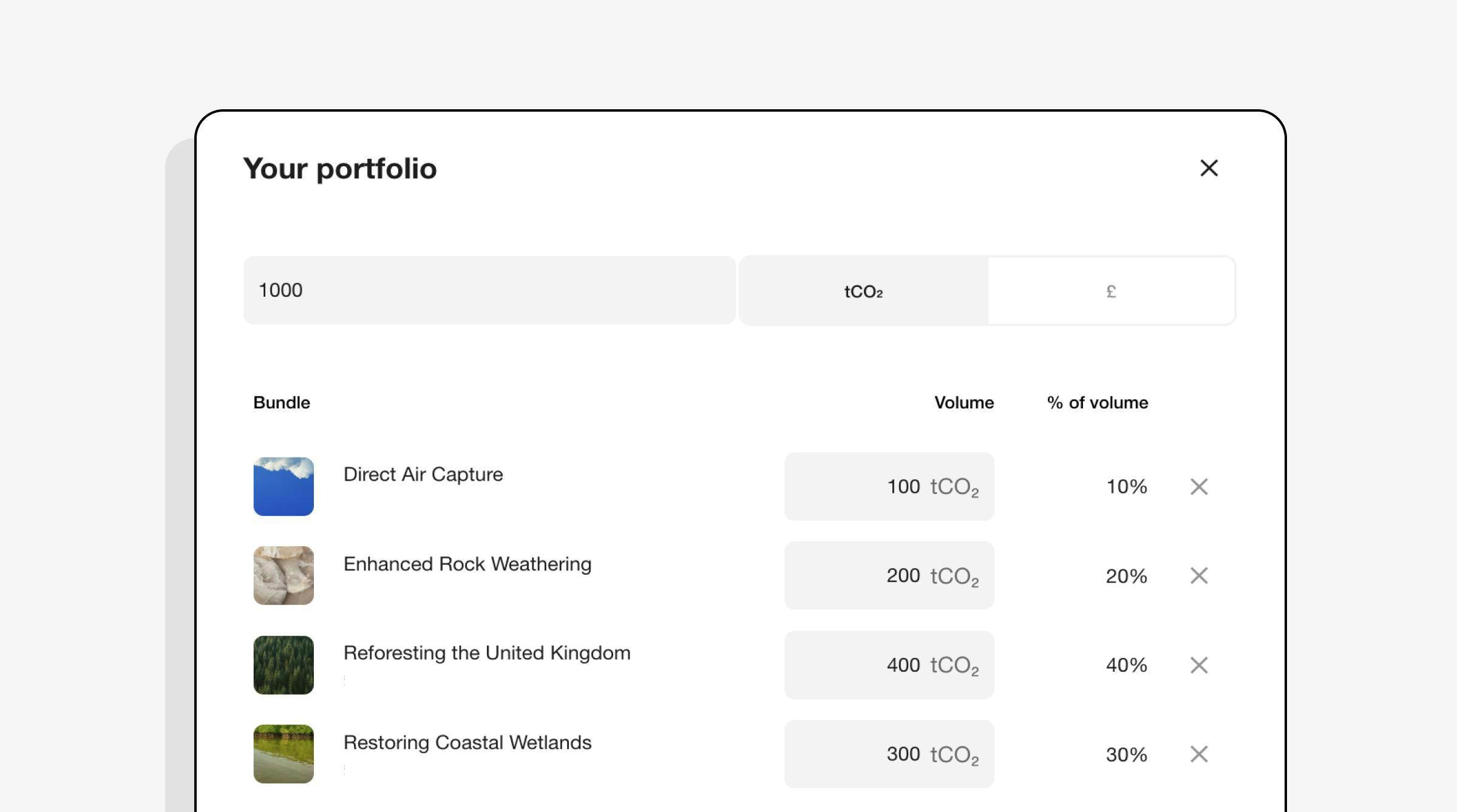
How do you actually go about buying carbon removals?
There are several different ways to go about buying carbon, enabling you to make a one-off purchase or set up an ongoing relationship – depending on what fits the needs of your company.
Carbon removals can be bought directly from suppliers i.e. by engaging with individual carbon projects like 1PointFive for Direct Air Capture or Treeconomy for afforestation and reforestation.
If you want to set up a portfolio of multiple projects to buy carbon removal from, you can purchase through a dashboard like Lune’s – with the advantage that multiple different projects are available all in one place, and they’ve been pre-vetted for quality.
Once you’ve decided on your approach, you may need to determine a process for keeping track of your carbon removal purchases.
The carbon credit retirement timelines (i.e. when the carbon removal actually takes place and is attributed to you as a buyer) for carbon removals can vary significantly because those early-stage carbon removal projects are typically selling pre-purchase carbon credits to fund their development, with the promise of delivering the credits once removals take place. So, you’ll need to have a record of the purchases and when they’re due to be retired for your records – especially if you’re using carbon removals towards a claim like a net zero target. Take a look at Shopify’s carbon credit tracking template as a starting point.
A good first step is to take a closer look at the type of carbon removal projects out there and get familiar with the differences between them – so we’d suggest requesting access to the Lune dashboard and having an explore. And, as always, if you’d like to chat through anything in the process, we’re always happy to help if you get in touch.
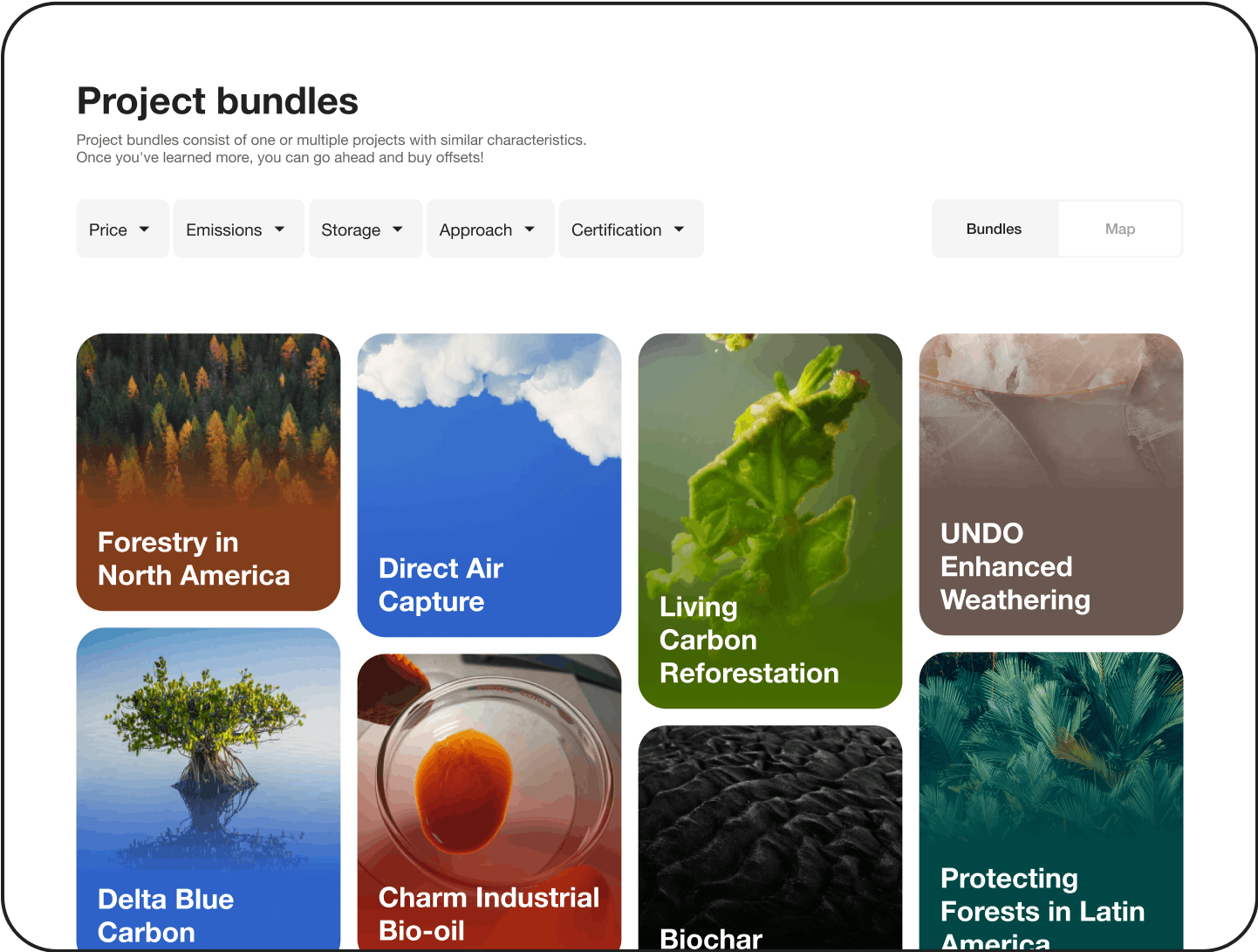
Readers also liked
Readers also liked

Subscribe for emissions intelligence insights
Get the latest updates in the world of carbon tracking, accounting, reporting, and offsetting direct to your inbox.


